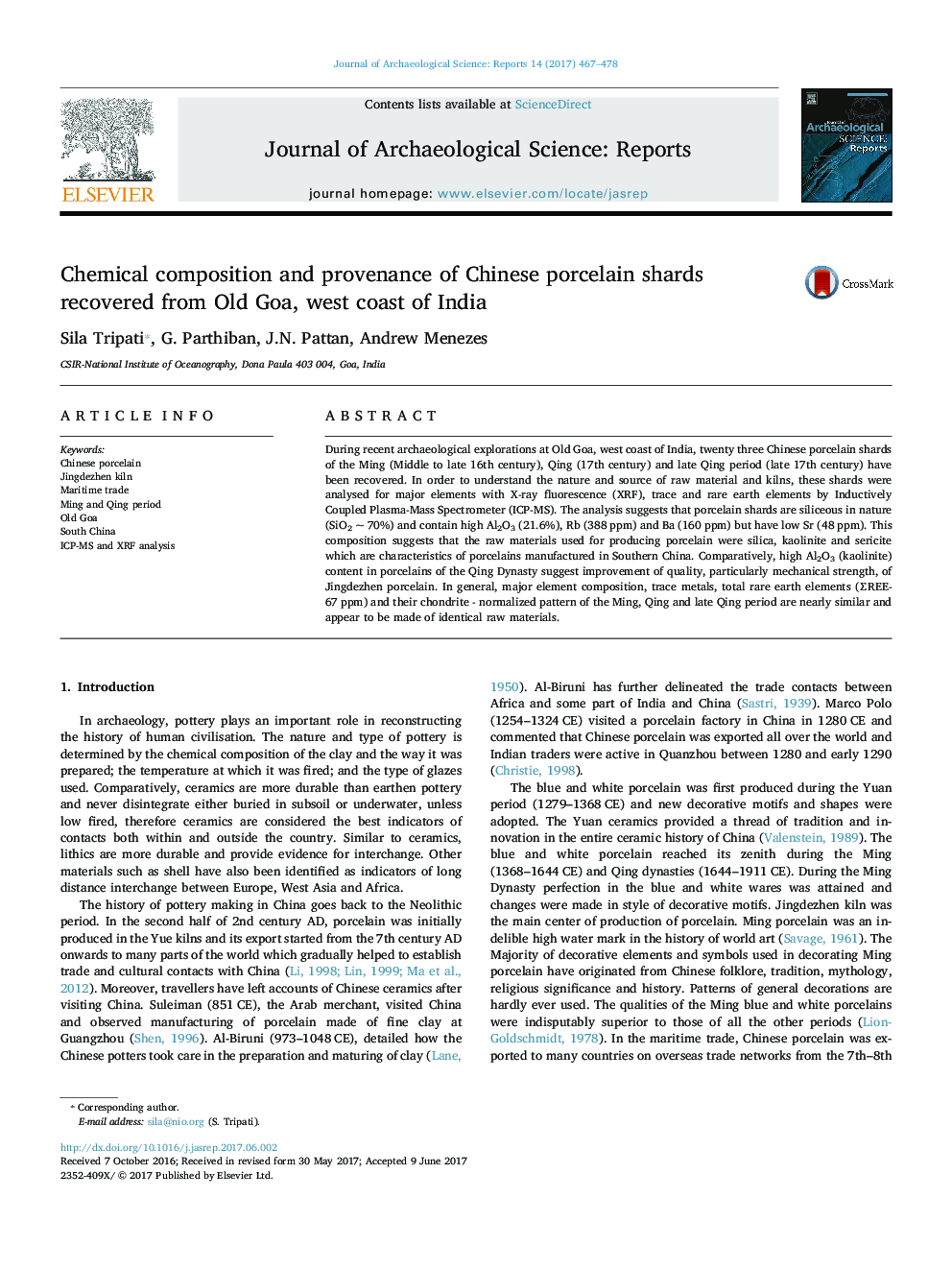| Article ID | Journal | Published Year | Pages | File Type |
|---|---|---|---|---|
| 5112359 | Journal of Archaeological Science: Reports | 2017 | 12 Pages |
Abstract
During recent archaeological explorations at Old Goa, west coast of India, twenty three Chinese porcelain shards of the Ming (Middle to late 16th century), Qing (17th century) and late Qing period (late 17th century) have been recovered. In order to understand the nature and source of raw material and kilns, these shards were analysed for major elements with X-ray fluorescence (XRF), trace and rare earth elements by Inductively Coupled Plasma-Mass Spectrometer (ICP-MS). The analysis suggests that porcelain shards are siliceous in nature (SiO2 ~ 70%) and contain high Al2O3 (21.6%), Rb (388 ppm) and Ba (160 ppm) but have low Sr (48 ppm). This composition suggests that the raw materials used for producing porcelain were silica, kaolinite and sericite which are characteristics of porcelains manufactured in Southern China. Comparatively, high Al2O3 (kaolinite) content in porcelains of the Qing Dynasty suggest improvement of quality, particularly mechanical strength, of Jingdezhen porcelain. In general, major element composition, trace metals, total rare earth elements (â REE-67 ppm) and their chondrite - normalized pattern of the Ming, Qing and late Qing period are nearly similar and appear to be made of identical raw materials.
Keywords
Related Topics
Social Sciences and Humanities
Arts and Humanities
History
Authors
Sila Tripati, G. Parthiban, J.N. Pattan, Andrew Menezes,
